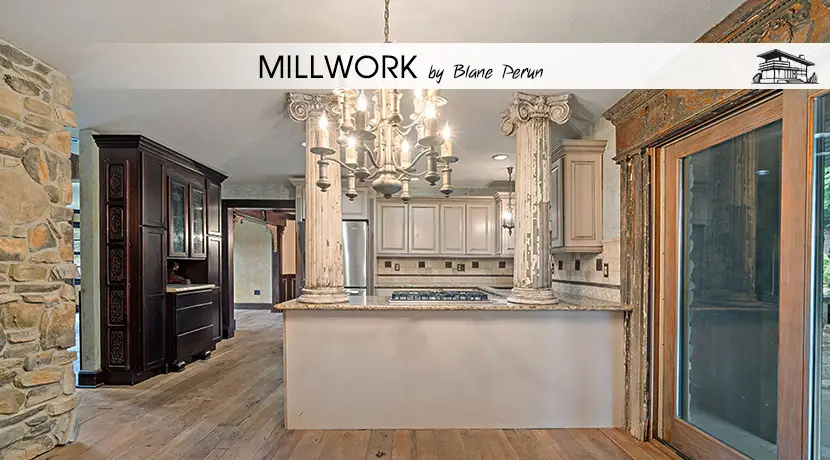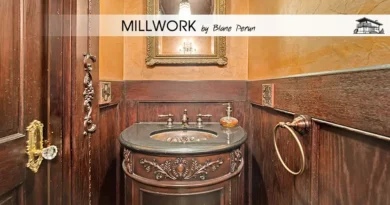Crown Millwork
Unveiling the Art of Crown Millwork: A Journey Through Craftsmanship and Design
In the world of interior design and home improvement, the elegance and sophistication that Crown Millwork brings to spaces is unparalleled. This architectural feature, often seen as the crowning jewel of a room, plays a pivotal role in enhancing the aesthetic appeal and overall value of properties. Crown Millwork, with its intricate designs and meticulous craftsmanship, embodies the perfect blend of artistry and engineering, making it a favored choice among homeowners and designers alike.

The Essence of Crown Molding
The Historical Significance of Crown Molding
Delving into the roots of Crown Millwork reveals a rich history that dates back to ancient civilizations. The Greeks and Romans were pioneers in using this architectural element, not just for its functionality but also for its decorative appeal. The scientific term “Cornice,” derived from Latin, encapsulates the essence of what we now refer to as Crown Molding. This historical perspective not only highlights the durability and timelessness of Crown Millwork but also showcases its evolution from a structural necessity to a decorative luxury.
Modern Applications and Innovations
In contemporary settings, Crown Millwork transcends traditional boundaries, embracing modern materials and technologies. Innovations in design software and cutting machinery have revolutionized the production process, allowing for precision and customization previously unimaginable. Materials like MDF (Medium Density Fiberboard) and PVC have introduced a new era of durability and versatility, catering to a wide array of interior and exterior applications. This evolution reflects the industry’s adaptability and commitment to meeting the ever-changing preferences of consumers.
Techniques and Materials in Crown Millwork
The Craftsmanship Behind the Scenes
The artistry involved in creating Crown Millwork is a testament to the skill and precision of craftsmen. From selecting the right wood to the intricate cutting and joining techniques, each step is crucial in shaping the final product. Techniques such as cope cutting and mitering are fundamental in ensuring seamless joints, a hallmark of quality Crown Millwork. This meticulous process underscores the blend of tradition and innovation that defines the craft.
Choosing the Right Material for Your Space
When it comes to selecting materials for Crown Millwork, the options are vast, each offering unique benefits. Hardwoods like oak and mahogany provide a classic, rich aesthetic but at a higher cost. On the other hand, synthetic materials like polyurethane offer cost-effectiveness and moisture resistance, making them suitable for a variety of environments. Understanding the properties and applications of these materials is essential in making an informed decision that aligns with your design vision and functional requirements.
The Impact of Crown Millwork on Interior Design
Enhancing Aesthetic Appeal and Property Value
The transformative power of Crown Millwork on a space cannot be overstated. It adds depth, character, and a touch of elegance that elevates the overall design. More than just a decorative element, Crown Millwork can significantly increase the market value of a property, making it a wise investment for homeowners. This dual benefit of aesthetic enhancement and value addition underscores the importance of incorporating Crown Millwork into interior design projects.
Trends and Personalization in Crown Millwork
The world of Crown Millwork is constantly evolving, with trends that cater to diverse tastes and preferences. From minimalist designs that complement modern interiors to elaborate patterns that evoke a sense of grandeur, the options are limitless. Personalization plays a key role in this context, with custom designs that reflect individual styles and narratives. This trend towards personalization highlights the versatility of Crown Millwork and its ability to adapt to various design philosophies.
Crown Millwork has firmly established itself as a cornerstone of architectural design, offering a blend of aesthetic appeal and functionality. Its ability to transform spaces and add value makes it a worthwhile consideration for any design project. As we continue to explore the possibilities within this craft, it remains clear that the art of Crown Millwork will continue to enchant and inspire for generations to come.

FAQs on Crown Millwork
What is the difference between Crown Millwork and standard molding? Crown Millwork refers specifically to the decorative trim installed at the top of interior walls, where they meet the ceiling, known for its intricate designs and craftsmanship. Standard molding, however, can include a wide range of trim types used throughout a space, often with simpler designs and for various functional purposes like covering transitions between surfaces.
How does Crown Millwork impact the value of a home? Crown Millwork adds architectural interest and elegance to a space, often making it more aesthetically pleasing and luxurious. This enhancement in appearance can contribute to a higher perceived value of the home, making it more attractive to potential buyers and possibly increasing its market value.
Can Crown Millwork be installed in any type of home? Yes, Crown Millwork can be adapted to fit the style and architecture of any home, from traditional to modern. The key is selecting the appropriate design and scale of the millwork to complement the space, ensuring it integrates seamlessly with the home’s overall aesthetic.
Is it possible to install Crown Millwork in rooms with low ceilings? Absolutely, Crown Millwork can be installed in rooms with low ceilings, but it requires careful consideration of the molding’s width and profile. Choosing a simpler, more streamlined design can enhance the room’s aesthetics without overwhelming the space. The right design can even create the illusion of a higher ceiling, adding a sense of spaciousness.
How do I maintain and clean Crown Millwork? Maintaining Crown Millwork involves regular dusting and wiping with a damp cloth to keep it clean. For painted wood or synthetic materials, mild soap and water can be used for deeper cleaning. It’s important to avoid harsh chemicals or abrasive materials that could damage the finish. For natural wood millwork, periodic reapplication of finish or polish might be necessary to preserve its beauty and integrity.
Crown Millwork, with its rich history and versatile applications, remains a distinguished element in architectural design, offering both aesthetic and functional benefits. Whether it’s enhancing the character of a space or contributing to the property’s value, Crown Millwork stands out as a smart and elegant addition to any design project.





